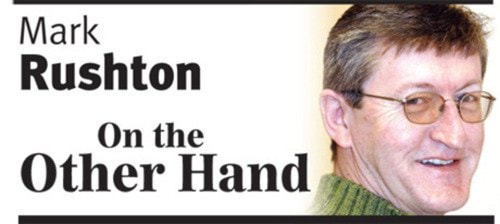Back in the late ’70s, hot songstress Blondie belted out the words “One way or another I’m gonna find ya, I’m gonna getcha getcha getcha getcha, One way or another I’m gonna win ya.”
With apologies to Ms. Harry, those bent on developing and expanding Canada’s oil industry are likely singing similar lyrics as they contemplate the ways to get Alberta crude to Asian markets.
The latest proposition, due to the supposedly huge negative reaction to pipeline construction, is to ship the oil by rail to Prince Rupert. Seven trains a day, each measuring I’d guess a mile or more long, with apparently enough capacity to match the daily flow through a pipeline.
While there are comparatively few rail accidents – the horribly tragic disaster of Lac-Megantic aside – the potential for environmental catastrophe caused by a derailment gives cause for reconsideration of a pipeline by those who are opposed.
The reason being, as the song notes, the oil is going to get to market “one way or another” . . . the financial benefits that accrue to all of us mandates its sale and export.
Our economy and our social infrastructure – health care, education, roads and bridges, transit, jobs, parks and everything else we want and need from government is provided by revenues.
And like it or not, since Canada’s economy is based on resource extraction and sale, our oil and gas, coal and forest products must go to market or our nation and our lifestyle will stagnate or regress.
Protection of our environment is noble and just, and must be at the forefront of any industrial expansion.
So any movement of our product must be done in the best, safest way. And pipelines, built with the latest technology, are far less prone to environmental disaster than trains or trucks or any other method that can put the product and the environment at risk.
It’s been a long while since I travelled Highway 16 from Prince Rupert to Terrace, but I recall it and the railway tracks paralleling the mighty Skeena. And from Edmonton or wherever the crude originates to Rupert, there are myriad rivers, streams and relatively pristine environments that are traversed by rail lines. Wildlife, level crossings, trestles and winter weather are all hazards to train traffic while, underground and in properly engineered river spans, a pipeline can move product in relative safety.
What does need to change with the pipeline proposal, however, is the coast terminus. Kitimat is not the best option, given the island-choked route to open ocean.
Extending the pipeline to Prince Rupert, as I’ve argued in a previous column, is the much better choice. It is only one island away from an obstacle-free route to Asia.
Kitimat may be fine for ships laden with aluminum ingots and perhaps even for LNG tankers. One product sinks, the other evaporates. Spilled oil, on the other hand, is proven to be a catastrophic environmental disaster – and we have to look no further than Alaska’s Prince William Sound and the Exxon Valdez.
Regardless, a transportation mode will be adopted, because “One way or another” revenue generation for our federal government, provincial governments and our way of life, which is based on the economy, requires it.
Stopping continued development of “the tar sands” and leaving natural gas in the ground simply won’t happen.
Therefore the rhetoric needs to be set aside and sensible dialogue prevail to ensure the safest and best methods of transportation are both chosen and mandated.
markrushton@abbynews.com
